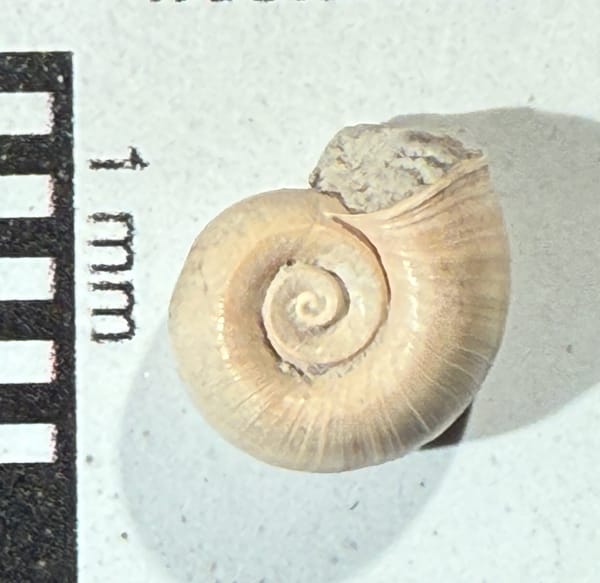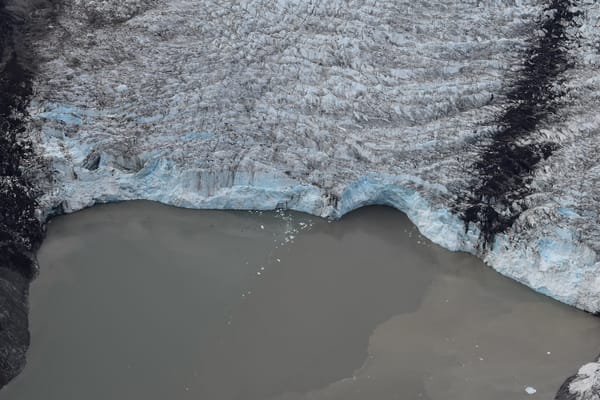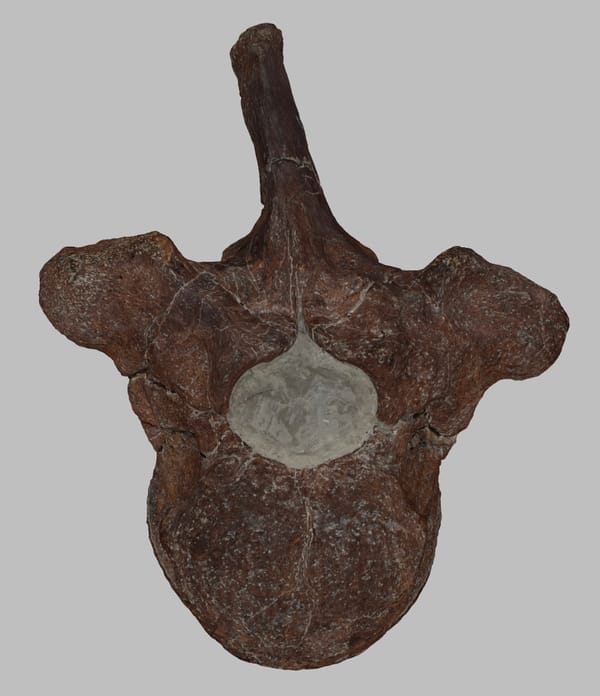Armor-plated lizard
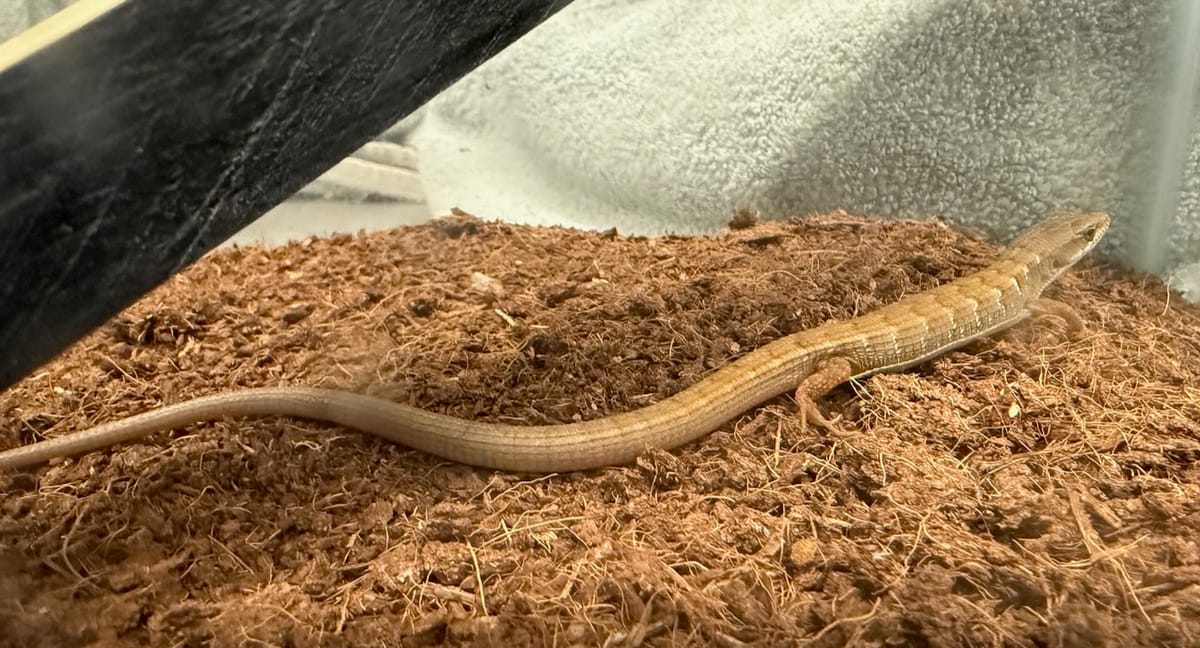
Pest control is a big deal for museums, as they can severely damage certain types of collections. But despite our best efforts wildlife will occasionally make its way into the museum, sometimes even including small vertebrates. Generally we release these back into the wild, but we do have a small display for live animals that have connections to our fossil collections that is currently vacant. Recently Leya, our lab manager, rescued a baby southern alligator lizard (Elgaria multicarinata) that was trapped in the museum. A quick check confirmed that we have fossil alligator lizards in the collections, so this became our new candidate for the live animal display.
I don't usually work on lizards, so I had to start reading up on alligator lizards in order to write new text for the display. I learned that the name "alligator lizard" comes from the alligator-like bony armor that covers their bodies! This caught me by surprise but I'm not sure why. While bony armor (osteoderms) are rare in mammals, it's actually quite common in reptiles, especially in many extinct groups. Obviously they're found in crocodilians, but also in a dizzying array of fossil forms including ankylosaurs, stegosaurs, and many other dinosaur groups, phytosaurs, aetosaurs, and countless others. They're also present in many living and extinct families of lizards, including the Anguidae, the family that includes alligator lizards.
I found an open-access paper (Ledesma and Scarpetta 2018) that includes detail images of the head and neck bones of Elgaria panamintina, including the osteoderms:
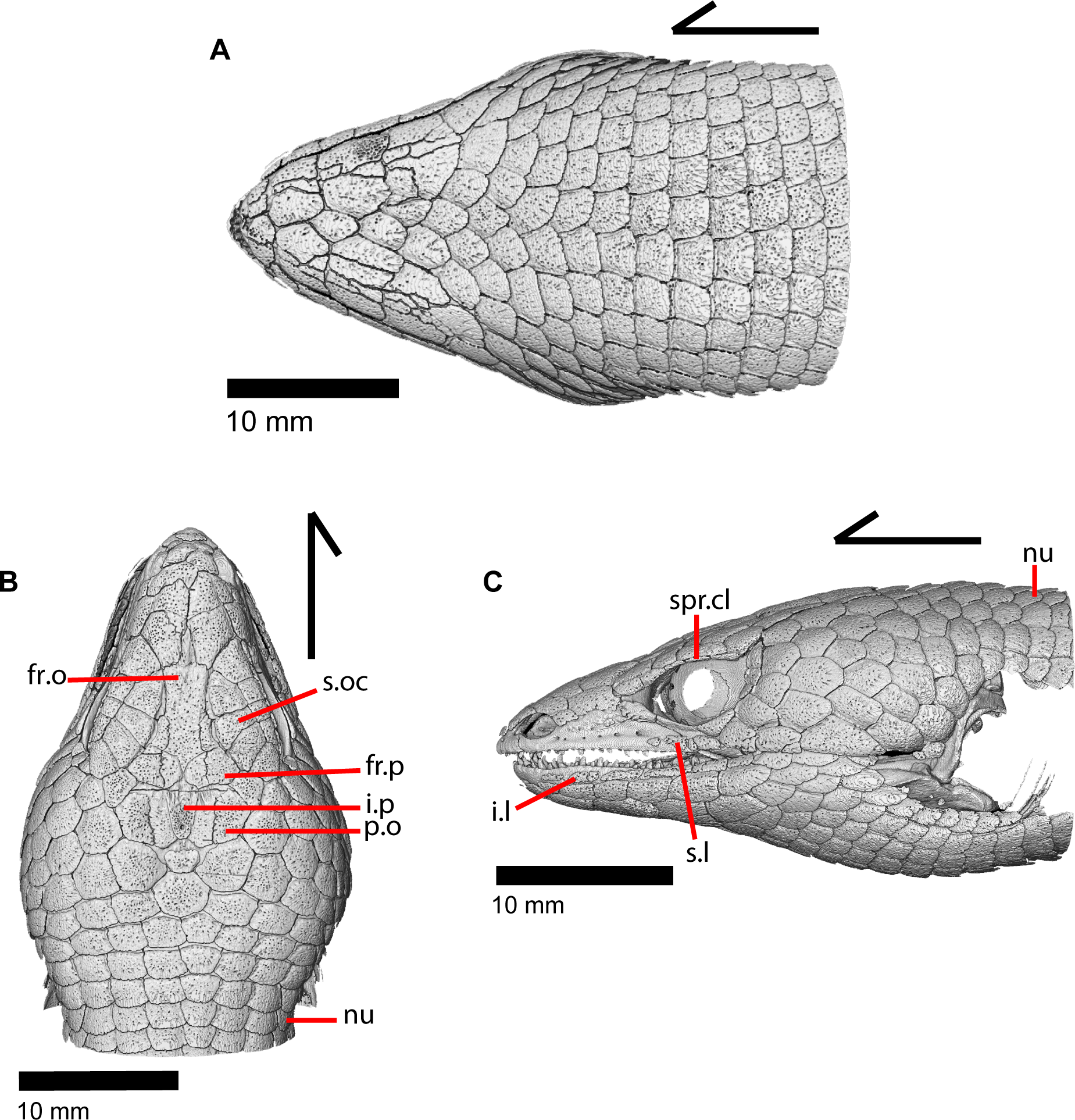
There are lots of osteoderms on these lizards! As is clear in the drawing above, they vary greatly in shape, but trend toward roughly trapezoidal with pitting on the exterior surfaces. Given that each lizard has a large number of osteoderms, I went back to our collections database to see if we had any fossil examples. Of the 48 fossil specimens listed as Elgaria in our collections, 8 are identified as osteoderms. Back to the microscope!

As expected, the osteoderms are near-trapezoidal, about 2 mm wide. The example shown here was found near the East Dam of Diamond Valley Lake; dates from some nearby localities indicate an age of around 50,000 years for these deposits. While this osteoderm is consistent with Elgaria, we can't definitively identify which species of Elgaria it represents.
The image is oriented with the posterior edge at the top. The posterior 2/3 is heavily sculpted, with lots of ridges and grooves. There also appears to be a slight keel, a ridge running right through the middle of the sculpted area (top to bottom the way the photo is oriented). The anterior 1/3 is smooth instead of sculpted. This makes sense if you look at the orientation of the osteoderms in the reconstruction above; the anterior part of this osteoderm was overlain by the osteoderm in front of it.
There is actually no strong consensus on the function of lizard osteoderms, and they may have multiple functions and they may differ from species to species. There are strong indications that they are not primarily an anti-predator defense, although they may help in inter-species mating combat (a lot of male lizards will bite their romantic competitors). There have also been suggestions that they could play a role in thermoregulation, calcium balance, skin flexibility, or a variety of other things. A good summary of the current state of thinking on lizards osteoderms can be found in Williams et al. 2021.

If you like what you're reading, please consider becoming a paid subscriber or leaving a tip. All proceeds go to cover the cost of maintaining the site and supporting research and education at the Western Science Center.

